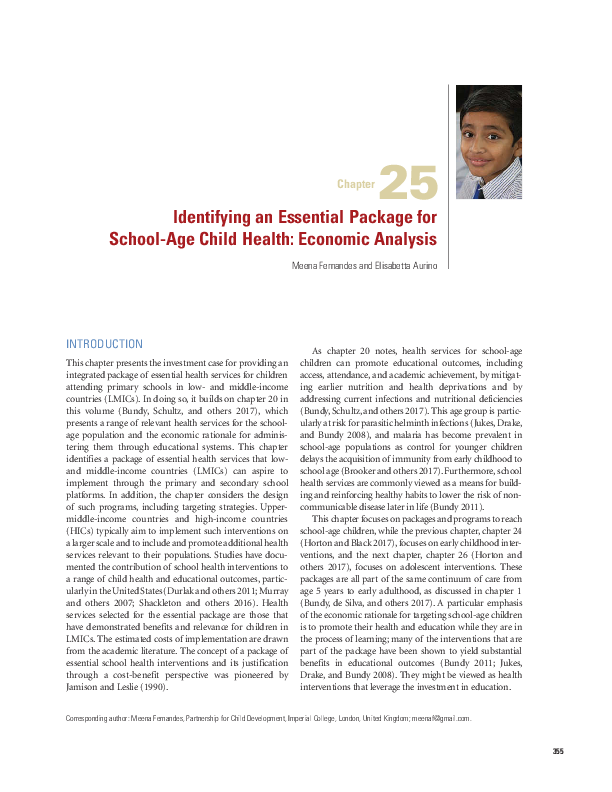
DCP Chapter 25: Identifying an Essential Package for School-Age Child Health: Economic Analysis
Publication year:
2017
English
Format:
Publisher:
The World Bank Group
An affordable package of school-based health interventions for low- and middle-income countries (LMICs) is defined in this chapter and estimates for the costs and potential benefits are presented. The interventions can improve the quality and the quantity of schooling, generating a high benefit-cost ratio. The returns to education prove highest in low-income countries (LICs), due, in part, to higher per capita income in lower-middle-income countries. More research could show how to support countries in financing the essential package as well as evaluating the benefits over the life course. Interventions for school-age children can have significant impacts on schooling, earnings, health status, and productivity in LMICs. The estimated benefit-cost ratios for such interventions consistently exceed one, suggesting that the discounted value of gains exceeds the costs. These results support the case for placing school health high on the policy agenda and for promoting coherence with early childhood health intervention programs to maximize benefit gains. Benefits may not scale up, however, despite scale economies, and the benefit-cost ratio for nationwide implementation may prove lower.
>> Press here to return to the Disease Control Priorities (3rd Edition) Start Page
Read full abstract
Authors
View & Download
Document information
Publisher
Authors
Format
Rights
© Author/Publisher
Found a mistake? Help us improve!
If you have noticed a document assigned to the wrong author or any other inaccuracies, let us know! Your feedback helps us keep our data accurate and useful for everyone.
Share
Link
